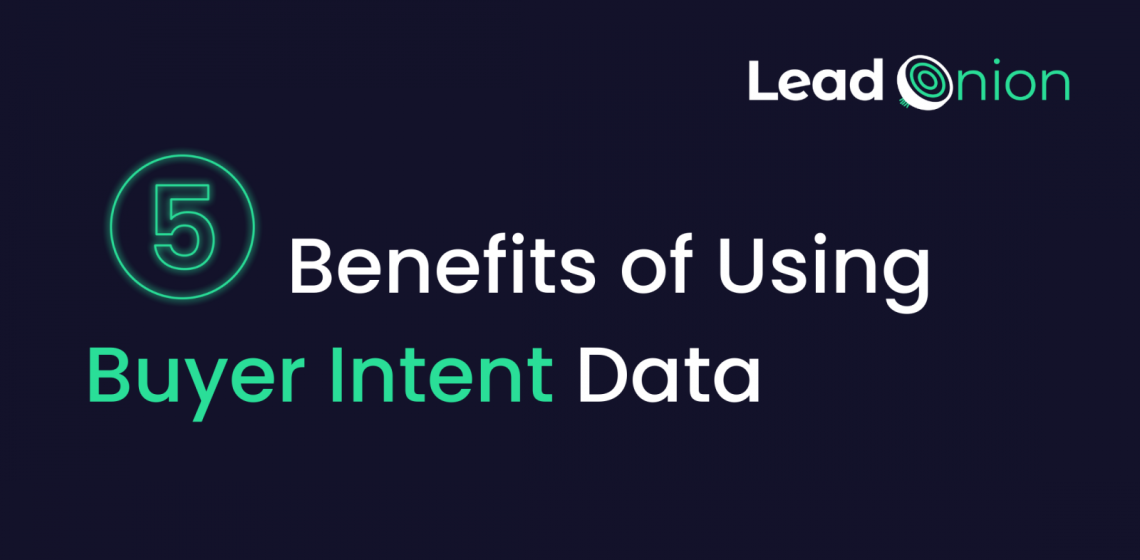Let's set the scene, all this B2B Buyer Intent stuff is new to you and you're skeptical?
Well, here are 5 benefits to help you seal the deal and move towards transforming your business with Buyer Intent data.
So what are the benefits? Let's go…
1. Efficient Prospecting
 Increased lead generation is the first step in any business development plan, you can fuel growth and scale-up. But when it comes to scaling up, your processes need to be capable of attracting an ever-increasing audience, without the need for significantly expanded resources.
Increased lead generation is the first step in any business development plan, you can fuel growth and scale-up. But when it comes to scaling up, your processes need to be capable of attracting an ever-increasing audience, without the need for significantly expanded resources.
When you have customers searching for your product or service, engaging with your industry’s marketplace and putting all their energy into finding the solution you have, wouldn’t you want to connect with them?
Not only does Buyer Intent-led prospecting ease the minds of your sales team when they pitch a sale to the right person at the right time, but it speeds up the qualifying process of finding SQLs and shortens the sales cycle.
In response to buyer intent data, marketing is able to refine their content based on what the intent data has shown your prospects are interested in. Even better: using B2B third-party intent data, you have access to the inside scoop on what, where and how your prospects are researching their solution.
By leveraging intent data, your business content can be tailored to meet the needs of each prospect or lead depending on where they are in their buying journey, so your content is relevant, personalised and present at the consideration stage.
2. Bolster Outbound Sales Results
Only 18% of marketers say their outbound work provides high-quality leads for your sales team.
B2B buyer intent will give you more insight to make better decisions on where your content will have the biggest impact, so you can expand the potential of your outbound sales.
As a vital aspect of prospecting, buyer intent data offers a high value return on your outbound marketing by showing a pathway to the qualified leads moving through their buying cycle.
According to Forbes, B2B buyers explore through 12 searches before they visit a brand's website and 90% of these researchers are searching online specifically relating to their business purchases.
With buyer intent, you are able to find the B2B decision makers searching for solutions and see exactly where they are looking, so you can target your content more effectively and place your messaging in their pathway.

Not only that, but you can then nurture them using one of our many integrations and sales tools, all from one platform!
Say goodbye to manual outreach and hello to powerful automation that is sure to convert!
3. Close The Gap Between Sales vs Marketing
When 27% of salespeople are spending over an hour a day on administrative, data-logging work instead of selling and only 34% of their time selling, it’s no surprise there’s a divide between marketing and sales.
Losing critical time to admin work is a sign you need to improve the efficiency of your funnel and put an end to sales claiming to source leads single-handedly. Intent data gives you the power to predict buyer purchasing intent with precision. Instead of lead scoring the traditional way, where you add points depending on the actions of your leads, you are able to score your leads for actions happening away from your platforms.
With more fine-tuned lead scoring, your sales team is able to dedicate more time to prioritising interested leads and contacting those ready to buy.
4. Improve Account-Based Marketing Campaigns
In B2B, targeting has shifted to account-based marketing, on an individual-level, and at the top of the agenda is building relationships with the right prospects. By utilising intent data, you have access to specific information, otherwise unavailable, about each individual prospect, including industry, job title and contact details.
For your content to remain relevant, buyer intent proves an effective resource in understanding the interests and behaviours of your B2B target market.
Using it in this way, you are able to view the scope of the buyer journey and each prospects’ stage within it.
From there, you are able to personalise messages that appeal to those in decision-making roles in your target companies.
5. Create Relevant, Impactful Content
Without effective research into your target market’s interests, you can’t guarantee the content you create will resonate with those viewing it. Intent data allows you to assimilate the topics your prospects interact with and the spaces within which they engage.
For example, if you know the questions or topics behind exploring in your marketplace, you can better tailor your content to respond to those questions right at the moment a prospect expresses them.
The result is a stronger content narrative and an increase in the flow of qualified leads to your site.

